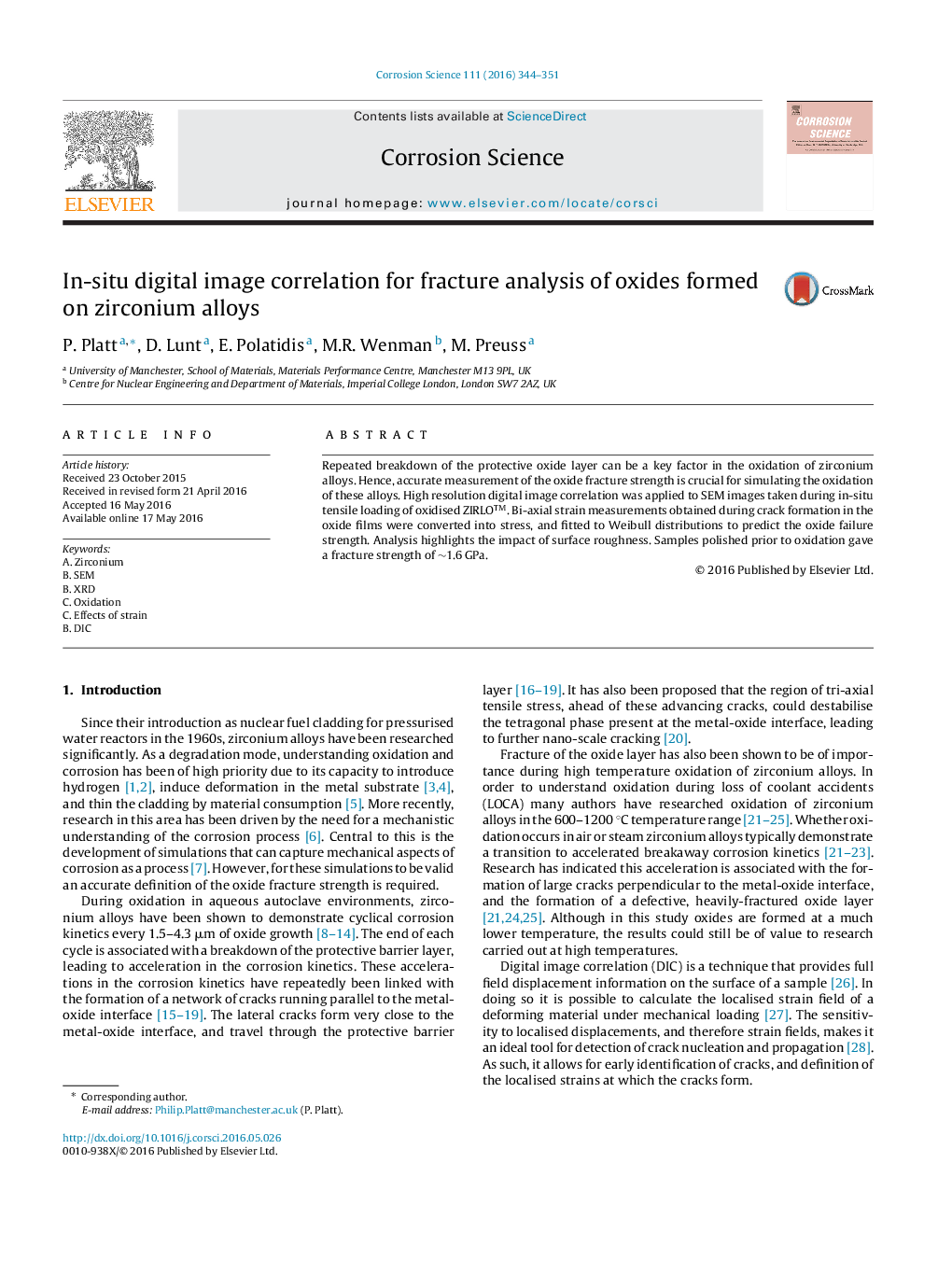| Article ID | Journal | Published Year | Pages | File Type |
|---|---|---|---|---|
| 1468304 | Corrosion Science | 2016 | 8 Pages |
•Scanning electron microscopy was used to image oxidised ZIRLOTM during in-situ tensile loading.•High resolution digital image correlation was applied to analyse the displacements during oxide fracture events, using a pattern created via the gold remodelling method.•Bi-axial strain measurements were corrected for residual strain and fitted to Weibull distributions to predict the oxide failure strength.•Analysis indicated a strong impact of the surface profile created prior to oxidation.
Repeated breakdown of the protective oxide layer can be a key factor in the oxidation of zirconium alloys. Hence, accurate measurement of the oxide fracture strength is crucial for simulating the oxidation of these alloys. High resolution digital image correlation was applied to SEM images taken during in-situ tensile loading of oxidised ZIRLOTM. Bi-axial strain measurements obtained during crack formation in the oxide films were converted into stress, and fitted to Weibull distributions to predict the oxide failure strength. Analysis highlights the impact of surface roughness. Samples polished prior to oxidation gave a fracture strength of ∼1.6 GPa.
